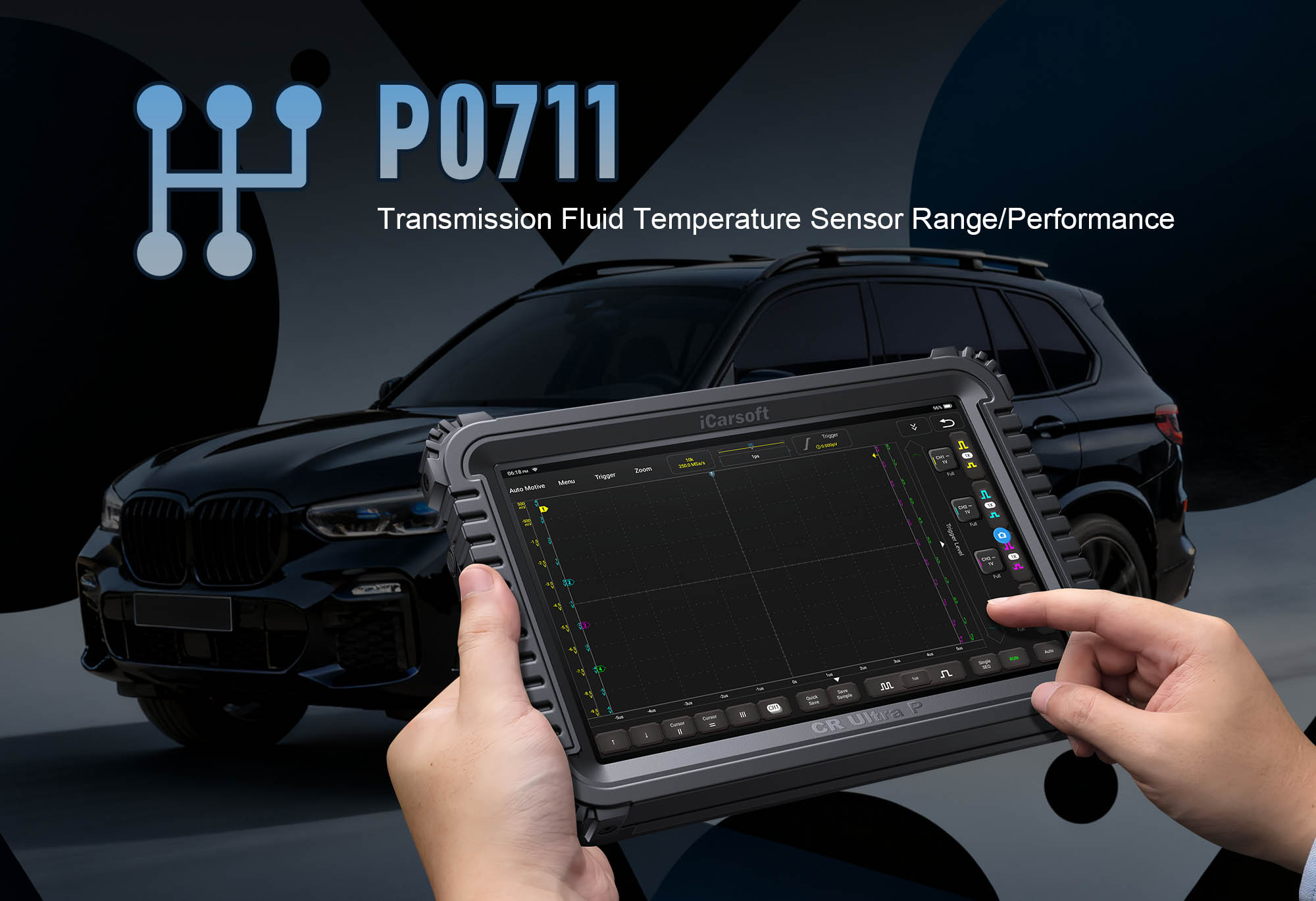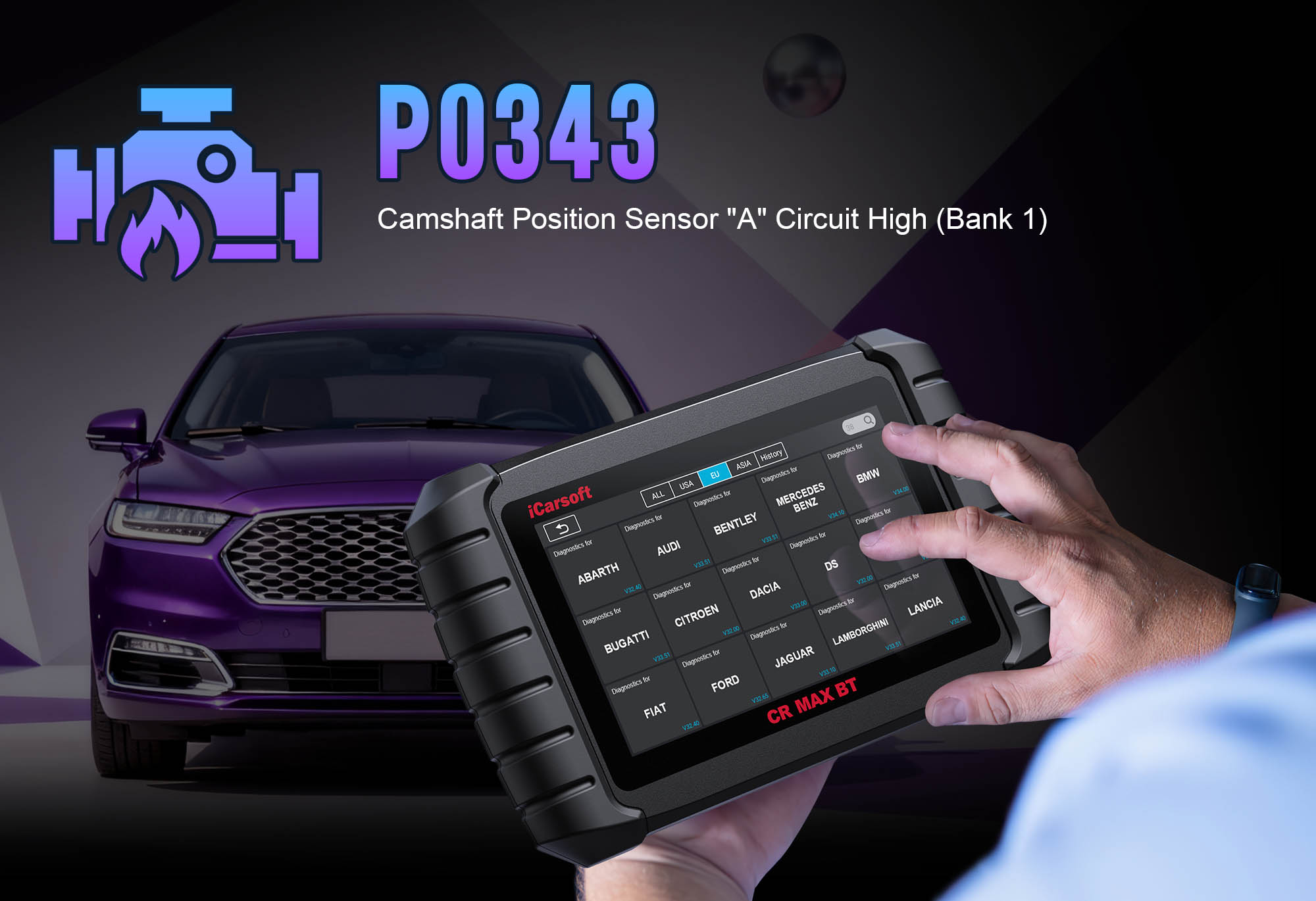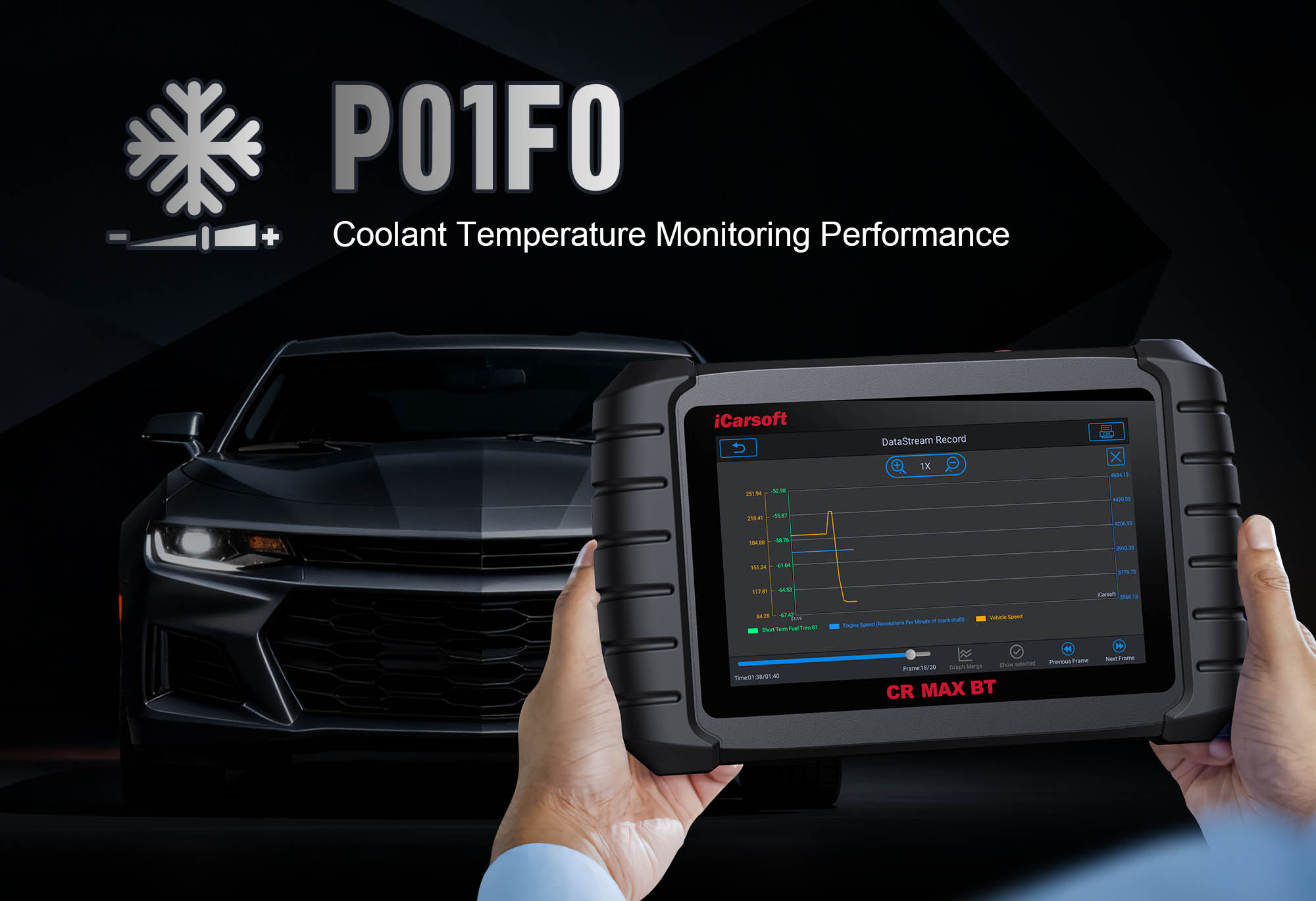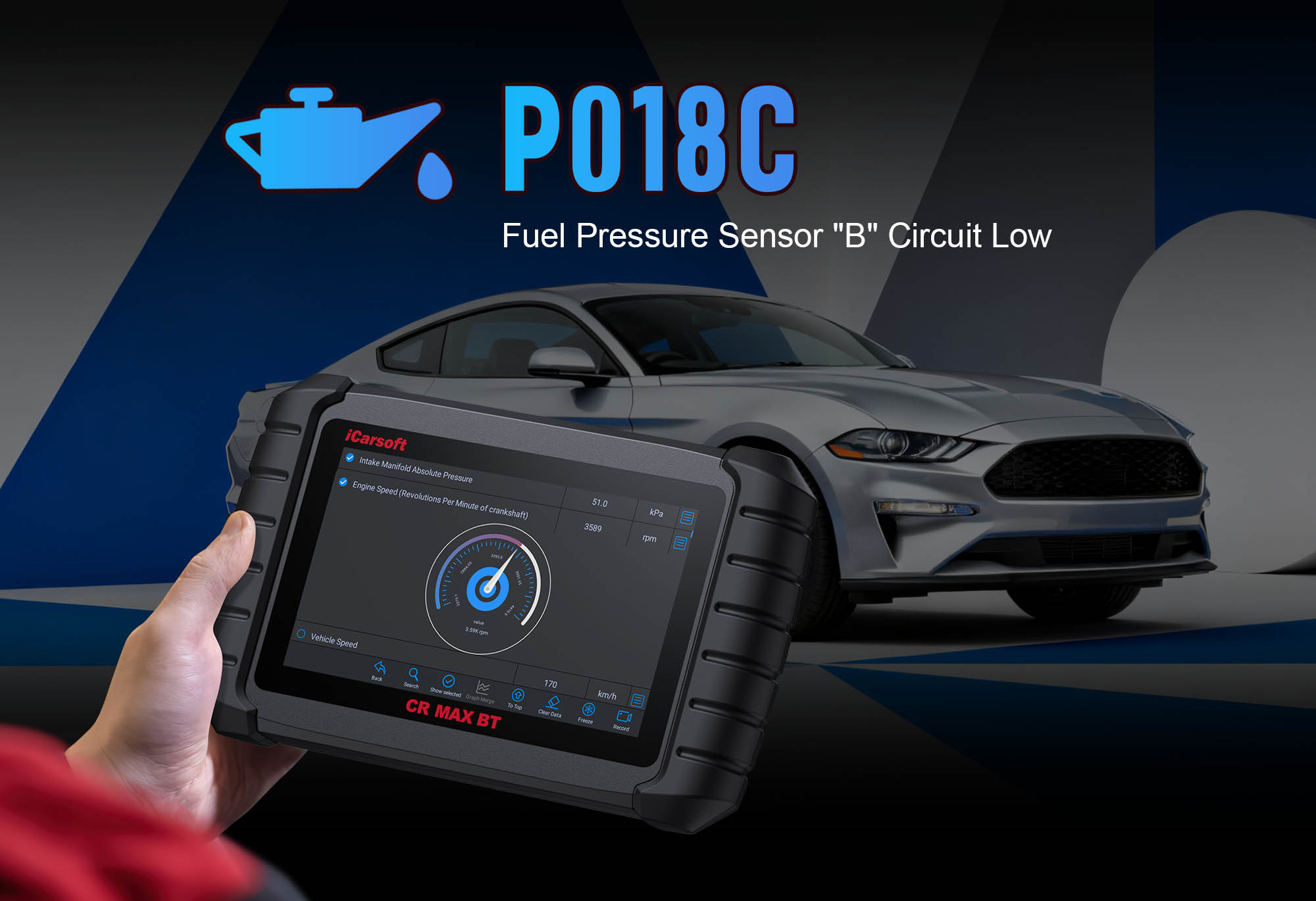Diagnose & Clear P0711 with iCarsoft CR Ultra P
If your vehicle’s transmission slips, shifts roughly, or triggers a "transmission hot" warning light, a diagnostic scan will likely return P0711. This OBD-II code stands for "Transmission Fluid Temperature (TFT) Sensor Circuit Range/Performance"—a fault targeting the sensor that monitors transmission fluid temperature, a critical metric for optimal gear shifting. The Transmission Control Module (TCM) uses TFT sensor data to adjust shift timing, pressure, and torque converter lockup; when the sensor sends erratic, out-of-range readings (e.g., -40°F when the fluid is actually 180°F, or 300°F when it’s only 200°F), the TCM can’t optimize transmission performance, leading to wear, slips, or overheating.
Basic scanners might only flag a "TFT sensor issue" but can’t verify sensor accuracy, test circuit integrity, or calibrate the TCM—leaving you guessing between a faulty sensor, damaged wiring, or TCM glitches. The iCarsoft CR Ultra P, with its OE-level transmission diagnostics, real-time temperature tracking, and bi-directional tests, solves this. Let’s break down how to diagnose and resolve P0711 with precision, using the CR Ultra P’s unique features to restore transmission fluid temperature monitoring and smooth shifting.
Understanding P0711: Causes & Key Symptoms
The TFT sensor is typically mounted in the transmission valve body, oil pan, or fluid cooler line, and it works by changing resistance as fluid temperature fluctuates (lower temp = higher resistance, higher temp = lower resistance). The TCM interprets this resistance as a temperature reading; P0711 triggers when the reading falls outside the manufacturer’s acceptable range (usually -40°F to 300°F) or changes too erratically (e.g., jumping 100°F in 10 seconds). As the fault persists, transmission performance degrades rapidly:
Key Symptoms of P0711
-
Rough or Delayed Shifting: The TCM uses incorrect temperature data to adjust shift pressure, leading to hard shifts (e.g., jolts when moving from 1st to 2nd gear) or delayed engagement.
-
Transmission Slipping: The torque converter fails to lock up properly, causing the engine to rev without a corresponding increase in speed (common at highway speeds).
-
"Transmission Hot" Warning: The TCM may trigger an overheat alert, even if fluid temperature is normal, to protect the transmission from damage.
-
Reduced Fuel Economy: Inefficient shifting and torque converter lockup issues drop mileage by 8–12%.
-
Transmission Limp Mode: Severe out-of-range readings force the TCM into limp mode (locks the transmission in 2nd or 3rd gear) to prevent catastrophic failure.
Common Causes of P0711
|
Cause
|
Description
|
|
Faulty TFT Sensor
|
Internal resistor failure causes the sensor to send stuck or erratic readings—common after 100,000+ miles or exposure to extreme temperatures.
|
|
Damaged Wiring/Circuit
|
Frayed wires, rodent chew marks, or corrosion (from fluid leaks) in the sensor’s harness create high resistance or short circuits.
|
|
Low/Contaminated Transmission Fluid
|
Low fluid levels reduce sensor contact with fluid, while dirty fluid (debris, metal shavings) coats the sensor, disrupting temperature detection.
|
|
Faulty TCM
|
Rarely, the TCM’s internal circuit for interpreting sensor data fails, misinterpreting normal resistance as out-of-range readings.
|
|
Sensor Connector Issues
|
A loose, corroded, or oil-soaked connector (near the transmission) disrupts signal flow between the sensor and TCM.
|
Why iCarsoft CR Ultra P Excels at Diagnosing P0711
The CR Ultra P outperforms basic tools with features tailored to transmission and TFT sensor diagnostics—critical for resolving P0711 accurately:
OE-Level Transmission System Access
Reads TCM data, TFT sensor resistance, and live fluid temperature—dealer-grade functionality basic scanners lack.
Real-Time Temperature & Resistance Tracking
Monitors TFT readings and resistance in real time, identifying erratic fluctuations that signal P0711.
Bi-Directional Sensor Tests
Sends commands to verify sensor responsiveness, distinguishing faulty sensors from wiring/TCM issues.
Transmission Topology Mapping
Visualizes the entire TFT circuit as a color-coded diagram, highlighting breaks, shorts, or high-resistance areas.
Global Vehicle Coverage
Supports 200+ brands and transmission types (automatic, CVT, dual-clutch), including 2018+ models with DoIP/CAN-FD.
CR Link VCI Compatibility
Seamless connectivity with modern TCMs, unlike older tools limited to basic OBD-II.
41 Hot Service Functions
Includes TCM reset, transmission adaptation relearn, and fluid temperature calibration—essential for post-repair validation.
Step-by-Step: Diagnose P0711 with iCarsoft CR Ultra P
-
Safety First & Initial Checks
1. Let transmission cool 2–3 hours (fluid temps exceed 250°F during operation) to avoid burns.
2. Check fluid level & condition:
- Use dipstick or Transmission > Fluid Level Check (dipstick-less models) to verify level.
- Inspect fluid: Bright red = clean; dark brown/black/burnt smell = contaminated (needs flush).
3. Locate components via Component Location > Transmission > TFT Sensor:
- TFT Sensor: Transmission oil pan/valve body/cooler line (2-wire sensor with plastic connector).
- Wiring Harness: Loom connecting sensor to TCM (routed along transmission/under vehicle).
- TCM: On transmission case or in engine bay (check tool’s diagram).
-
Connect Tool & Confirm P0711
Plug CR Ultra P into OBD-II port, pair with CR Link VCI. Select AutoVIN Identify to retrieve transmission type, TFT specs (resistance range, pinouts), and TCM protocol. Navigate to Transmission > Fault Codes > Read Codes to confirm P0711. Tap Code Details for insights (e.g., "Honda Accord: Temp Reading -38°F, Expected 60–80°F"). Check related codes (P0710, P0712) and resolve P0711 first.
-
Use Topology Mapping to Isolate the Fault
Navigate to Transmission > Topology Mapping > TFT Sensor Circuit. Review the color-coded diagram:
- Green: Functional components (stable readings, intact wiring, responsive TCM).
- Yellow: Erratic readings (loose connector, mild corrosion, low fluid).
- Red: Faulty components (stuck sensor, broken wire, TCM failure).
Note red/yellow areas to target further testing.
-
Test TFT Sensor & Circuit Integrity
1. TFT Sensor Resistance Test: Disconnect sensor, multimeter Ohms—cold (60°F) = 5–10k ohms, hot (200°F) = 200–500 ohms; out-of-range = faulty sensor (replace).
2. Live Temperature & Signal Test: Reconnect connector, start engine, idle 5 minutes. Monitor Transmission > Live Data > TFT Sensor: Temp rises gradually (80–100°F at idle), voltage fluctuates 0.5V–4.5V; erratic jumps/fixed voltage = sensor/wiring fault.
3. Bi-Directional TCM Communication: Use Transmission > Special Functions > TCM Communication Test—successful = TCM responds "Sensor Data Received"; no response = locked/faulty TCM (use TCM Reset).
-
Repair or Replace to Fix P0711
- Fluid Service: Drain/replace fluid with manufacturer-recommended type (e.g., Dexron VI, ATF WS); use Transmission > Fluid Reset to reset life monitor. Add small increments for low fluid (avoid overfilling).
- Wiring/Connector Repairs: Splice frayed wires with 18-gauge automotive wire + heat-shrink; clean corroded connectors with contact cleaner + dielectric grease; replace bent/broken connectors.
- TFT Sensor Replacement: Remove old sensor (socket wrench for pan-mounted; disconnect cooler lines for line-mounted), install OEM-compatible sensor (e.g., Dorman 904-771, Bosch 0261210235); torque to 8–12 ft-lbs, reconnect connector, refill fluid if needed.
- TCM Reset/Relearn: Use Transmission > Special Functions > TCM Reset; run Transmission Adaptation Relearn to sync new sensor with TCM.
-
Clear P0711 & Validate the Repair
1. Clear Code: Navigate to Transmission > Fault Codes > Clear Codes—confirm P0711 deletion.
2. Test Drive: Operate 30–40 minutes (city + highway); verify smooth shifts, no slipping, no "transmission hot" warnings. Monitor Live Data for steady TFT readings (150–200°F at highway speed).
3. Post-Repair Validation: Run Transmission > System Check—"No Faults Detected" confirms TFT sensor/circuit functionality.
4. Save Report: Document diagnostics/repairs via History & Report for future reference.
Preventing P0711 Recurrence
-
Regular Fluid Checks: Use Service Reminder to check fluid level/condition every 15,000 miles; replace fluid every 60,000 miles (per manufacturer specs).
-
Sensor Monitoring: Test TFT sensor resistance/live readings every 30,000 miles—catch early degradation before P0711 triggers.
-
Wiring Inspections: Check sensor harness during transmission service—look for fluid leaks that cause corrosion.
-
3 Years of Free Updates: Use One-Key Upgrade to add advanced features (e.g., TFT sensor drift detection) as manufacturers release them.
Conclusion
P0711’s TFT sensor range/performance fault risks transmission damage, poor shifting, and costly repairs. The iCarsoft CR Ultra P simplifies diagnosis with OE-level tools, real-time data tracking, and bi-directional tests, ensuring you fix the root cause—whether a faulty sensor, dirty fluid, or wiring issue—without guesswork.
With 200+ brand coverage, CR Link VCI, and 41 service functions, the CR Ultra P is more than a P0711 fix—it’s a long-term investment in transmission health. Restore smooth shifting, boost fuel economy, and protect your transmission—all with one professional-grade diagnostic tool.





